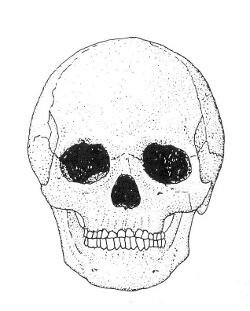The history of the exploration of the `Kalk Bay’ Caves on the South Peninsula.
The caving activities of John Meyer and his caving friends from 1924 to 1950 was an important period in the history of cave exploration on the Cape Peninsula and especially the `Kalk Bay’ Caves. They were amongst the pioneers that proceeded ‘formal’ caving in the region, which was initiated with the establishment of the Cape Section of the South African Spelaeological Association in 1954.
John Meyer systematically explored & named most of the caves in Kalk Bay mountains & was the core of the `Moles’, avid cavers of the early 1900s. His legacy includes the cave names and the extensive network of paths he built to the caves which are still in use today.
By Anthony Hitchcock: Member of the Cape Peninsula Spelaeological Society forming part of the national organization called the South African Spelaeological Association.
Read about it at: https://scenicsouth.co.za//2011/07/spelaeologist-meyer-the-moles-of-kalkbay-caves/
The Archaeology of the South Peninsula
When one thinks of the South Peninsula, the environment is the first to spring to mind: the sea and the mountain. Both were formative to the earliest inhabitants. Caves in the Table Mountain sandstone and marine resources gave both shelter and food all the year round.
The earliest evidence we have for human occupation in the area are the Early Stone Age tools, probably dating to over 400,000 years ago found at the kaolin mine in the Fishhoek Valley, and below the parking lot at the Cape of Good Hope. (See photo A) These handaxes are similar to those found throughout Africa, that are dated to almost one million years ago in East Africa. The makers of these tools would have been an early form of human known as Homo erectus. No skeletons of these people have been found in South Africa, but, again, East African examples can be used as a proxy.
Hunting tools of the Middle Stone Age, dating to between 200,000 and 40,000 years were found at Peer’s Cave, also in the Fishhoek Valley. There we have a sequence of Stillbay and Howiesonspoort cultures that are similar to those found on the southcoast where the world’s earliest ‘art’ comes. Engraved ochre and sea shell beads dating to 70,000 years ago come from Blombos, near Stillbaai, and on the west coast, decorated ostrich eggshell from Diepkloof, near Elandsbay, all point to creative skills of archaic Homo sapiens.
Modern people, like ourselves, lived in caves and accumulated shell middens on the South Peninsula. Excavations at Peer’s Cave, Smitswinkelbaai Cave and Bonteberg Shelter all produced stone and bone tools, and the food waste of these people. Not only shellfish, but seals, fish, crayfish were available all year round, and the odd stranding of a Southern Right Whale would have been a real bonus. What do you do with 40 tonnes of whale meat? You either camp inside and eat your way out, or you bury some of the meat and blubber, as noted by early travellers to the Cape. An experiment at Olifantsbos in the Cape Point Reserve in 1992 showed that meat and fat will last up to three weeks in the moist sands of the beach (if you don’t mind the smell). Smell, of course, is cultural, and an extract from John Jourdain in 1608 shows that local people at the Cape preferred their meat ‘well hung’, i.e. matured, before eating, not unlike the British practise of hanging game.
“…having brought our boates laden with these seals, we cutt the fatt from them for oyle, and the rest was throwne a good distance from the tents because of noysomnes: upon which fish the Saldanians fed hartlie on, after it had lyen in a heape 15 daies, that noe Christian could abide to come within a myle of it” (Raven-Hart, R. 1967. Before van Riebeeck. Cape Town, Struik, p. 42).
To the Khoekhoen, the fat of seal was another bonus that could be mixed with ochre and lathered on the body like suntan oil. This gave a lovely glow to the skin in the sunlight, as is witnessed by the Himba and Maasai herders of Africa today. The Khoekhoen herders also introduced pottery to the Cape, and this was used to render marine oil fats.
12 000yr Human Skull, Fish Hoek Man from Peers Cave
Ochre was also used as pigment in rock art. Peer’s Cave has the most southerly rock art in Africa. High up on the walls of the cave today, this attests to the original level of the cave deposit before it was excavated and cleared by Bertie Peers in the 1920s.
By: Andrew B. Smith, Emeritus Associate Professor, Archaeology Dept., UCT
[return to top]


